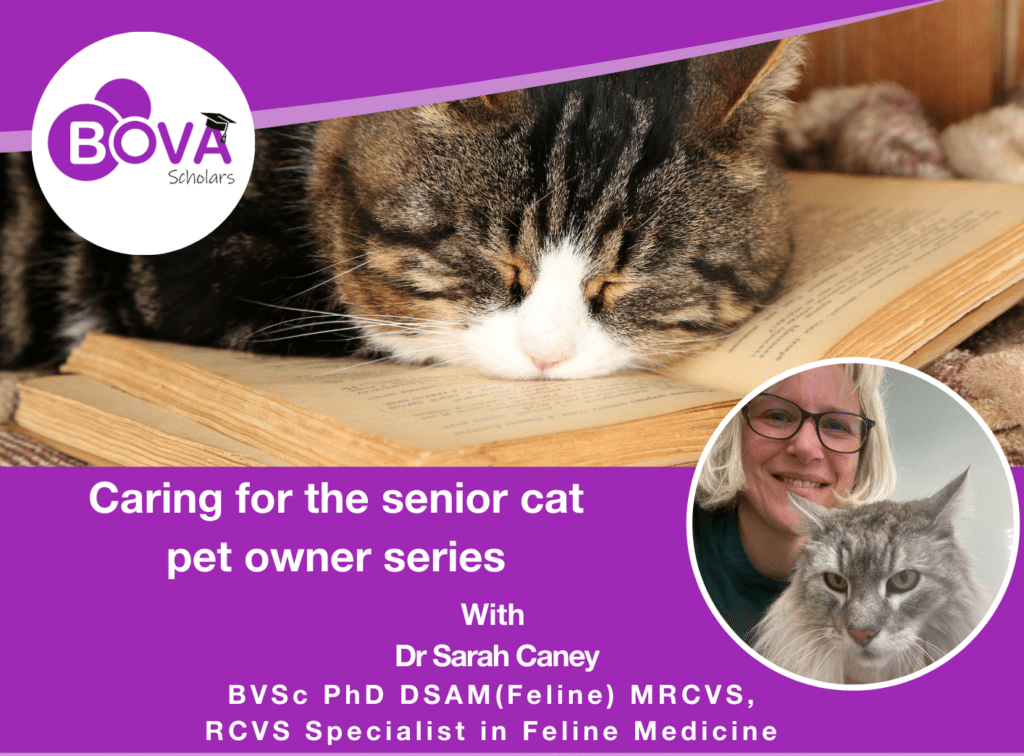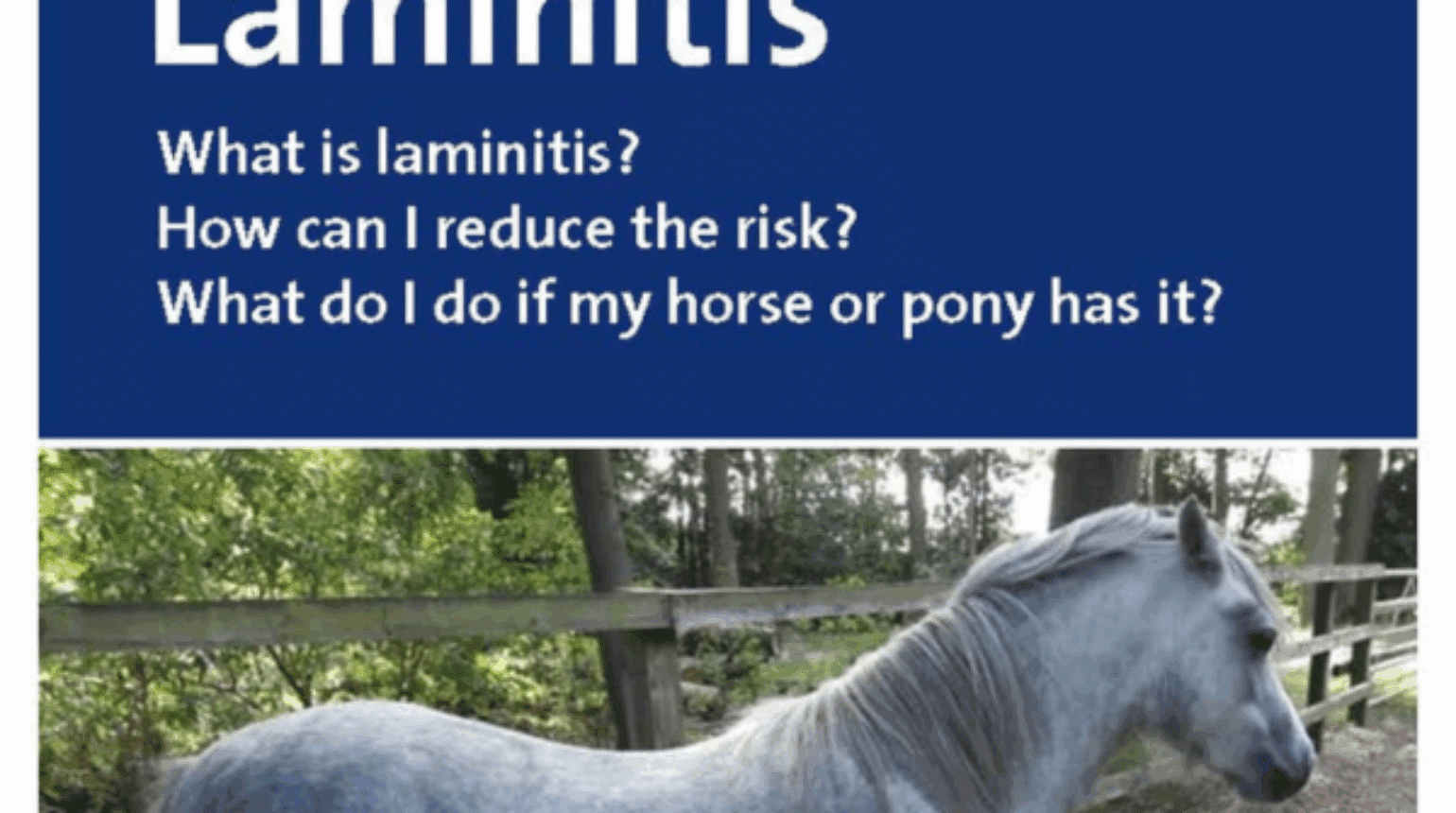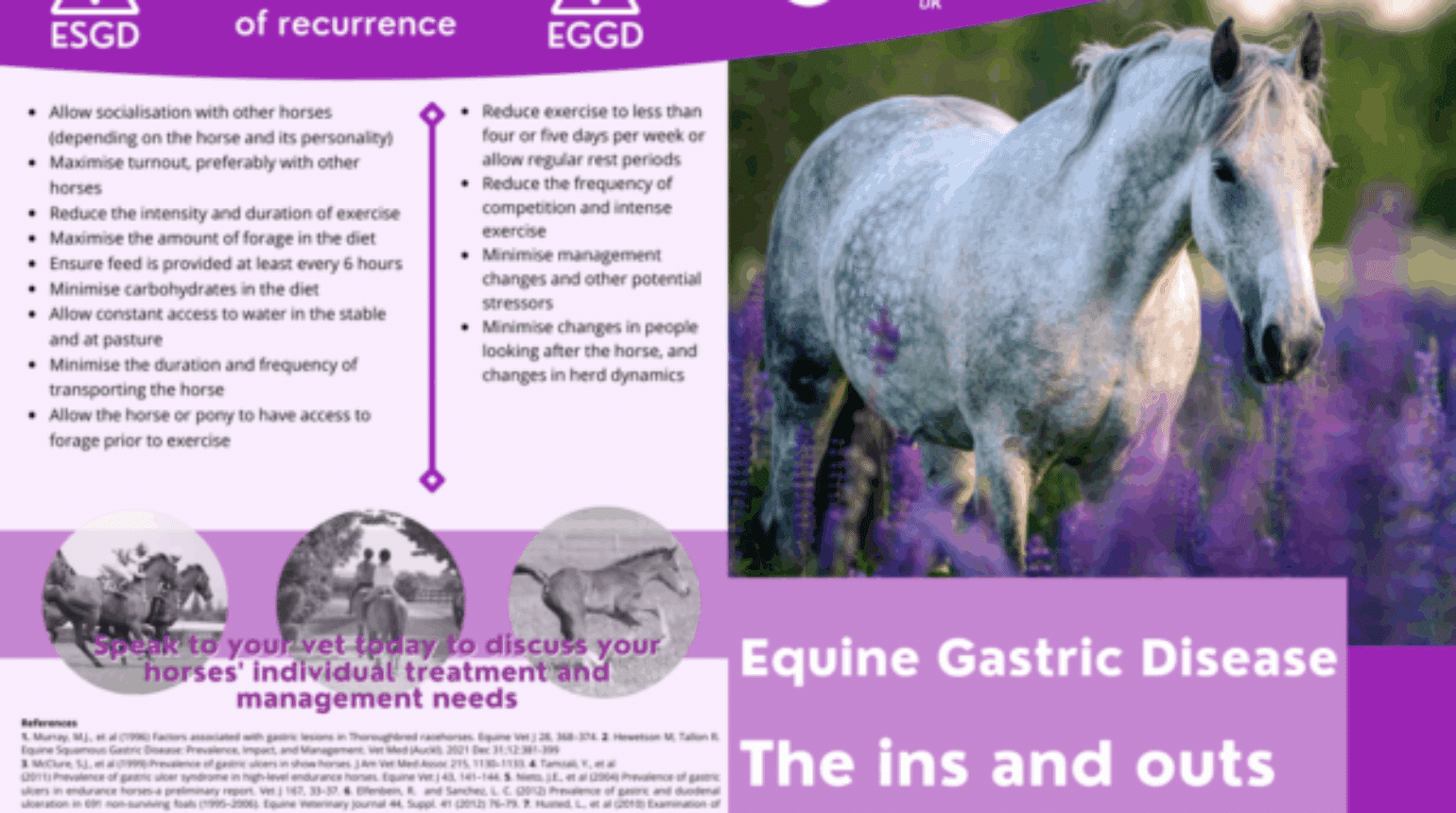Caring for the senior cat pet owner series – Dr. Caney
Flyer
Dr. Sarah Caney joins Bova UK for a senior series to help owners spot the signs of senior cat conditions. Cats are notorious for hiding pain and discomfort. These webinars aim to help owners spot signs earlier and work with their vets to improve their beloved cats’ quality of life.
Instant access awaits! Dive into our on-demand webinars now!
Webinars
Caring for a cat with hyperthyroidism
Hyperthyroidism is a medical condition usually caused by non-cancerous overgrowth of the thyroid gland and is especially common in older cats. Globally, around one in ten cats over the age of 10 years suffer from this condition. Typical clinical signs of hyperthyroidism include weight loss, often in spite of a normal or even increased appetite. Vomiting, diarrhoea and behavioural changes such as restlessness/anxiety and increased vocalisation are also common. Most cases of hyperthyroidism are straightforward to diagnose with a simple blood test. There are several treatment options including medication that blocks the production of thyroid hormones, surgical removal of the thyroid, radiotherapy(radioiodine), and feeding an iodine-restricted food. Many cats with hyperthyroidism respond well to treatment and go on to live a good quality of life for several years following diagnosis.
Caring for a cat with hypertension
Systemic hypertension is the medical term for a persistent increase in blood pressure that is damaging to the body. Hypertension is most commonly seen in older cats and especially in those known to have certain medical conditions which cause an increased risk of high blood pressure. Chronic kidney disease is currently thought to be the most important cause of high blood pressure in older cats. Unfortunately, as with people, hypertension is often a “silent killer” so clinical signs of this condition may be completely absent until the condition is very advanced. Clinical signs that can be seen include bleeding in the eyes which can cause sudden blindness and neurological signs which may mimic a stroke. Most clinics are now aware of hypertension as a feline issue and can measure blood pressure in cats which helps to confirm the diagnosis. Medications are available to treat hypertension in cats and these usually work very well to stabilise affected cats.
Caring for a cat with arthritis
Degenerative joint disease is often referred to as arthritis is common in older cats. Often arthritis develops very slowly and since it affects multiple joints on multiple limbs it can be difficult to spot: lameness is rarely a feature and more often the cat will adjust their activity levels and lifestyle to cope with the chronic pain they are suffering from. The most common signs spotted by owners are difficulties they notice in their cat’s ability to go up and/or down stairs, jump up and/or down, and running/playing. Signs of pain such as grumpiness and altered relationships within the home might also be evident. Diagnosis of arthritis is not always easy but management can make a big difference to the quality of life – whether through offering support for the ‘disabled’ cat (eg offering an indoor litter tray to a cat that previously toileted outside and low/easy access comfortable beds), special diets and joint supplements and painkillers.
Presenters
Sarah M. A. Caney BVSc PhD DSAM(Feline) MRCVS, RCVS Specialist in Feline Medicine
CEO
Vet Professionals
Sarah Caney is an internationally recognised specialist in feline medicine who has worked as a feline-only vet for more than twenty years. She trained as a specialist at the University of Bristol and is one of twelve recognised specialists in feline medicine working within the UK. Sarah has written or co-written four books published by her business Vet Professionals (www.vetprofessionals.com) including ‘Caring for an elderly cat’ and ‘Caring for a cat with chronic kidney disease’. Sarah conducts online owner surveys and has published much of her research results in the Journal of Feline Medicine and Surgery.






